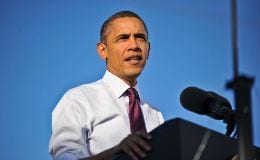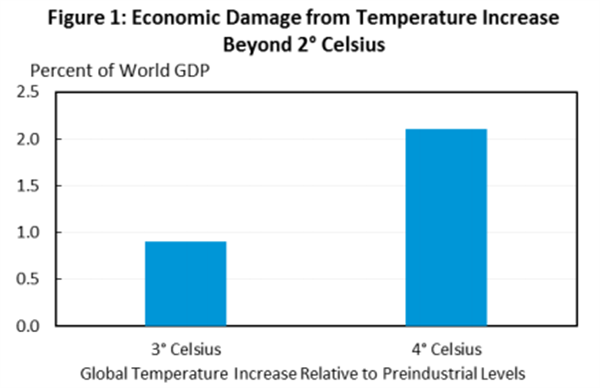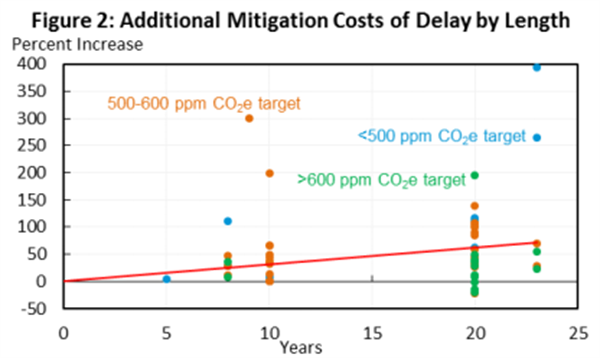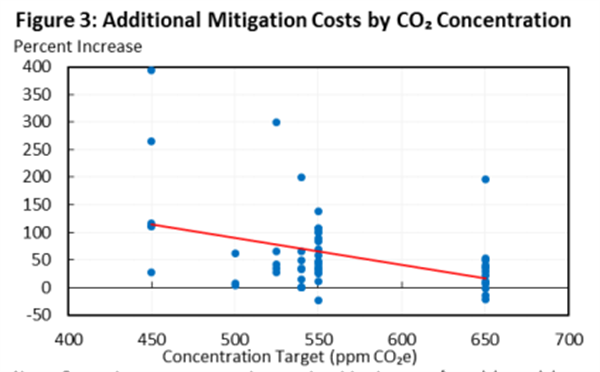 President Obama has taken significant, if limited, steps to try and curb the US’s emissions and tackle climate change. A new White House report explains why he appears to be acting with a sense of urgency: “delay is costly”.
President Obama has taken significant, if limited, steps to try and curb the US’s emissions and tackle climate change. A new White House report explains why he appears to be acting with a sense of urgency: “delay is costly”.
Yesterday, the White House’s Council of Economic Advisers released a report suggesting a 10 year delay could increase the cost of taking climate action by 40 per cent, as the world would have to take larger steps to curb emissions down the line. Furthermore, each degree of warming could lead to billions of dollars worth of additional damage, it says.
Here’s three charts from the report showing why the council says policymakers need to act now.
Additional damage
The more the world warms, the more damaging the impacts of climate change are likely to be – from more intense weather events, to diminishing crop yields and species migration and extinction. All these things have an economic cost, even if it’s sometimes hard to define.
And the council’s study says the costs will rise as the world warms – as the blue bars on this graph show:
The White House report uses a model by Yale economist Bill Nordhaus to put a number on the potential impact of additional warming.
It shows that delaying action to the extent that the world warms by three degrees rather than two could cost the world an additional 0.9 per cent of global output each year (a measure of economic wellbeing, like GDP).That’s the equivalent of $150 billion of the US’s GDP, the report says. Or around $670 billion of world GDP, according to our calculations.
The difference between warming of three and four degrees is 1.2 per cent of global output – or 2.1 per cent overall – the model suggests.
Costly delays
The longer policymakers delay action, the more costly implementing climate policies gets, the report suggests.
The red line on the chart below shows the average cost increase for each decade policymakers decide not to take action, on average. It goes from almost 40 per cent for a 10 year delay, to around 50 per cent for a 20 year delay.
The dots on the graph are the various studies the report assessed. There is a large variation because some models estimate much greater damages occurring sooner than others. Nonetheless, the council says there is “an overall pattern of costs increasing with delay”.
Ambition
Similarly, if policymakers are going to take ambitious action to avoid the worst impacts of climate change, the council suggests they should do it quickly.
As the red line on the graph below shows, the cost of delay increases depending on how stringent emissions reductions turn out to be:
Countries will have to cut emissions to reducing the concentration of greenhouse gases in the atmosphere if the world is going to curb global warming.
To prevent warming of more than two degrees, the concentration of greenhouse gases in the atmosphere needs to be kept to around 450 parts per million of carbon dioxide equivalent. If policymakers delay action now, but later decide to cut emissions to such an extent, it could end up costing about 120 per cent more than it otherwise would have, on average.
If policymakers later decide to make less stringent cuts, the additional cost is lower – but the world will have to pay more to deal with worse impacts of climate change.
The study show “the more ambitious the climate target, the greater are the costs of delay”.
Underlying logic
The council’s chairman, Jason Furman, told the New York Times that the study shows the logic behind President Obama’s controversial climate action plan is sound.
The report concludes that regulations such as Obama’s plan to curb coal power plant emissions are needed to stimulate climate action, as the market is failing to do so without such intervention.
The president’s policies should be seen as “climate insurance”, the report says, as they should help the world avoid the most severe – and ultimately costly – impacts of climate change. The message mirrors that of a report released by a bipartisan group of industry leaders last month, which outlined the business case for action on climate change.
The Council of Economic Advisers’ report shows why the president, US, and world need to do more to tackle climate change – sooner rather than later.
Source: The Carbon Brief. Reproduced with permission.













